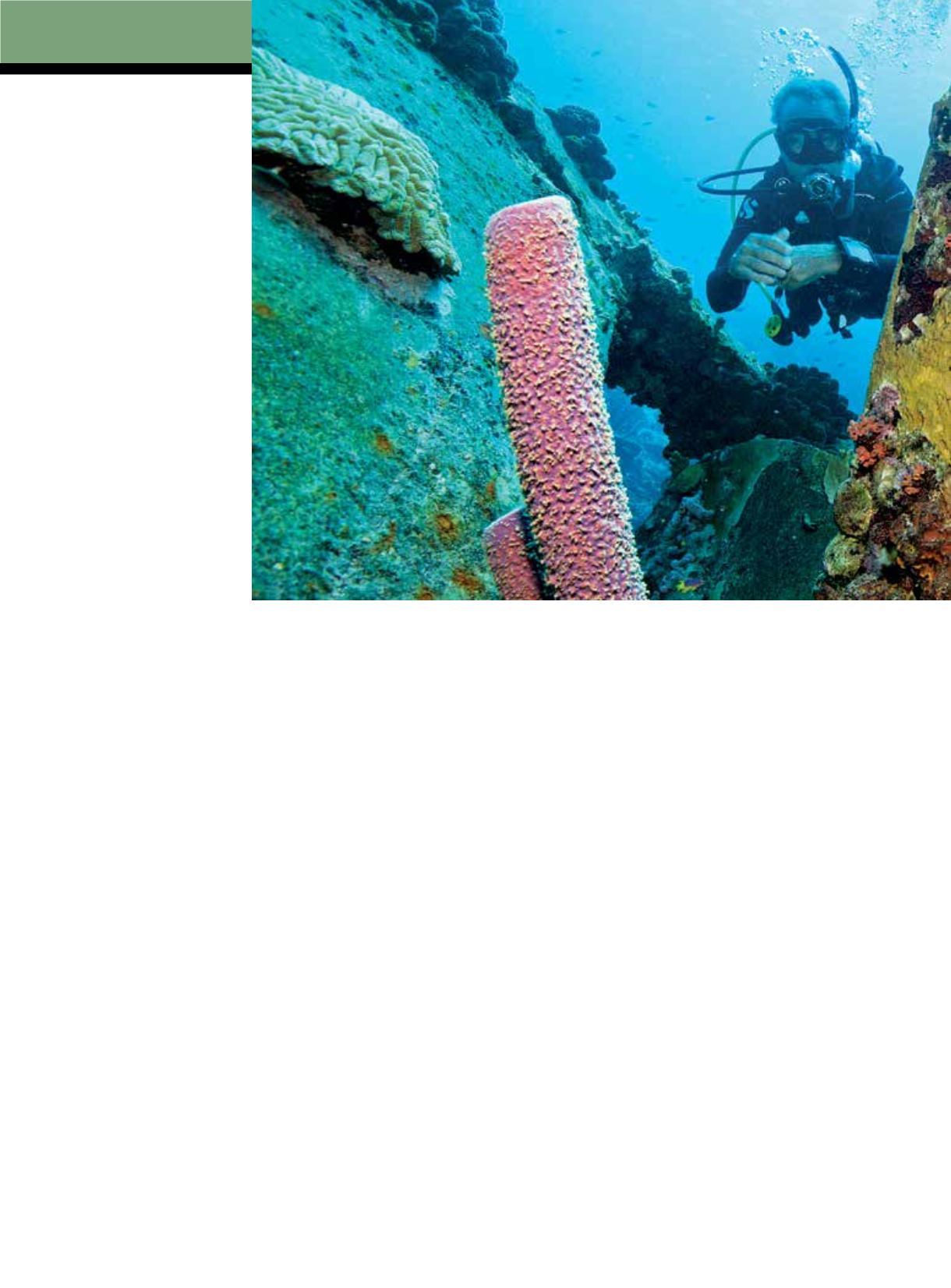

88
|
WINTER 2016
Dive computers generally
work as designed, but the
mathematical algorithms
do not evaluate many of
the factors that can alter
the decompression risk of a
given exposure.
Opposite:
Bubbles can be
seen in a diver’s heart on
the screen of a portable
ultrasound device. The
right heart is shown on the
left side, with the right
ventricle above the right
atrium. Many of the bright
spots in the right heart are
decompression-induced
bubbles (in contrast with
the bubble-free left heart).
Bubbles are not found after
all dives but are more likely
after dives with greater
decompression stress.
L
imited gas supply and less-than-stellar
thermal protection once worked to cap
decompression stress for the typical
diver. Increased choices for gas supply
and improved thermal protection have
enabled divers to go further and longer.
Dive computers have likewise expanded the
freedom to explore. The square profiles of
the past can be replaced by complex dive
profiles that are easily tracked by these little boxes.
Decompression safety may be achieved by staying
within dive computer or dive table limits, but
decompression sickness (DCS) can develop even
after dives that remain within prescribed limits.
Dive computers generally work as designed, but the
mathematical algorithms do not evaluate many of the
factors that can alter the decompression risk of a given
exposure. Building in modest buffers at every step of
the diving process can help ensure good outcomes.
This article will discuss concepts important for
conservative practices, some of the pitfalls that must
be overcome, and practical strategies for defensive
dive-profile planning and implementation.
CONCEPTUAL CONTROL
Know the risks.
Diving is used for both work and
pleasure, and in the vast majority of cases it concludes
without problems. The risks, though, should not
be ignored. Understanding them is a critical step in
preparedness. Early recognition of issues can resolve
many before they become troublesome.
Take responsibility for your safety.
Do not give any
other person or any device complete authority over
your activity. Some divers will follow a divemaster
they just met without question; others will follow a
computer without thinking about what it does not
know or will expect it to get them out of trouble they
may create. Any person or device can make mistakes.
Make sure that you are actively and intentionally
involved in every step of every dive, able to lead
yourself when necessary.
DEFENSIVE DIVE PROFILE PLANNING
BY NEAL W. POLLOCK, PH.D.
















